@brainresilience.bsky.social
“We’re making a helmet people can wear that delivers ultrasound to the brain, and we plan to initiate clinical testing of this protocol in the next few months,” said Raag Airan.
With Knight Initiative support, they plan to test it on people soon.
🔗 brainresilience.stanford.edu/news/new-ult...
With Knight Initiative support, they plan to test it on people soon.
🔗 brainresilience.stanford.edu/news/new-ult...

November 10, 2025 at 11:47 PM
“We’re making a helmet people can wear that delivers ultrasound to the brain, and we plan to initiate clinical testing of this protocol in the next few months,” said Raag Airan.
With Knight Initiative support, they plan to test it on people soon.
🔗 brainresilience.stanford.edu/news/new-ult...
With Knight Initiative support, they plan to test it on people soon.
🔗 brainresilience.stanford.edu/news/new-ult...
Fantastic talks at yesterday's seminar!
Ted Wilson - Unveiling early Alzheimer’s: biomarkers and breakthroughs on the path to brain resilience.
Raag Airan - Ultrasonic debris clearance for improving neurofluid flow and decreasing neuroinflammation.
Ted Wilson - Unveiling early Alzheimer’s: biomarkers and breakthroughs on the path to brain resilience.
Raag Airan - Ultrasonic debris clearance for improving neurofluid flow and decreasing neuroinflammation.


November 5, 2025 at 1:00 AM
Fantastic talks at yesterday's seminar!
Ted Wilson - Unveiling early Alzheimer’s: biomarkers and breakthroughs on the path to brain resilience.
Raag Airan - Ultrasonic debris clearance for improving neurofluid flow and decreasing neuroinflammation.
Ted Wilson - Unveiling early Alzheimer’s: biomarkers and breakthroughs on the path to brain resilience.
Raag Airan - Ultrasonic debris clearance for improving neurofluid flow and decreasing neuroinflammation.
Reposted
We welcome three Stanford Interdisciplinary Graduate Fellows (SIGFs)—Sarah Zou, Nick M, and Pengli Wang! Projects include efforts to decode traumatic brain injury (TBI), map brain-body communication, and find treatments for rare childhood diseases.
🔗 neuroscience.stanford.edu/news/wu-tsai...
🔗 neuroscience.stanford.edu/news/wu-tsai...

Wu Tsai Neurosciences Institute Welcomes 2025 Stanford Interdisciplinary
Stanford doctoral students spanning neuroscience, chemical engineering, and electrical engineering are
neuroscience.stanford.edu
November 3, 2025 at 8:55 PM
We welcome three Stanford Interdisciplinary Graduate Fellows (SIGFs)—Sarah Zou, Nick M, and Pengli Wang! Projects include efforts to decode traumatic brain injury (TBI), map brain-body communication, and find treatments for rare childhood diseases.
🔗 neuroscience.stanford.edu/news/wu-tsai...
🔗 neuroscience.stanford.edu/news/wu-tsai...
“By the time we examine an autopsied brain-tissue sample, a pathologist will have rinsed it with alcohol, removing lipids,” said Knight Initiative director Tony Wyss-Coray, D. H. Chen Professor II and @stanfordneuro.bsky.social professor. “So, we can miss them.”
med.stanford.edu/news/insight...
med.stanford.edu/news/insight...

Rethinking Alzheimer's: How these tiny balls of fat factor in
A classic but ignored Alzheimer’s hallmark — myriad oily droplets in brain cells called microglia — may help connect several of the disorder’s better known but not well understood features.
med.stanford.edu
October 29, 2025 at 9:38 PM
“By the time we examine an autopsied brain-tissue sample, a pathologist will have rinsed it with alcohol, removing lipids,” said Knight Initiative director Tony Wyss-Coray, D. H. Chen Professor II and @stanfordneuro.bsky.social professor. “So, we can miss them.”
med.stanford.edu/news/insight...
med.stanford.edu/news/insight...
Thank you to our wonderful speakers and everyone who joined us at the Fall 2025 Symposium and Poster Session! It was a day full of insights into the latest research on healthy brain aging, resilience, and various neuroscience studies at Stanford.




October 13, 2025 at 6:57 PM
Thank you to our wonderful speakers and everyone who joined us at the Fall 2025 Symposium and Poster Session! It was a day full of insights into the latest research on healthy brain aging, resilience, and various neuroscience studies at Stanford.
Our Fall Symposium is today! We look forward to our poster session and talks by:
John W. Day, Soyon Hon @soyonhonglab.bsky.social,
Alina Isakova, Andrew C. Yang, Hongkui Seng @hongkuizeng.bsky.social, and Xuchen Zhang.
John W. Day, Soyon Hon @soyonhonglab.bsky.social,
Alina Isakova, Andrew C. Yang, Hongkui Seng @hongkuizeng.bsky.social, and Xuchen Zhang.

October 9, 2025 at 6:13 PM
Our Fall Symposium is today! We look forward to our poster session and talks by:
John W. Day, Soyon Hon @soyonhonglab.bsky.social,
Alina Isakova, Andrew C. Yang, Hongkui Seng @hongkuizeng.bsky.social, and Xuchen Zhang.
John W. Day, Soyon Hon @soyonhonglab.bsky.social,
Alina Isakova, Andrew C. Yang, Hongkui Seng @hongkuizeng.bsky.social, and Xuchen Zhang.
Reposted
Six @stanford.edu scientists, including Anne Brunet @brunetlab.bsky.social, have been awarded High-Risk, High-Reward Research program grants from the National Institutes of Health.
This will support Brunet's work on the peripheral nervous system, organs & aging.
news.stanford.edu/stories/2025...
This will support Brunet's work on the peripheral nervous system, organs & aging.
news.stanford.edu/stories/2025...

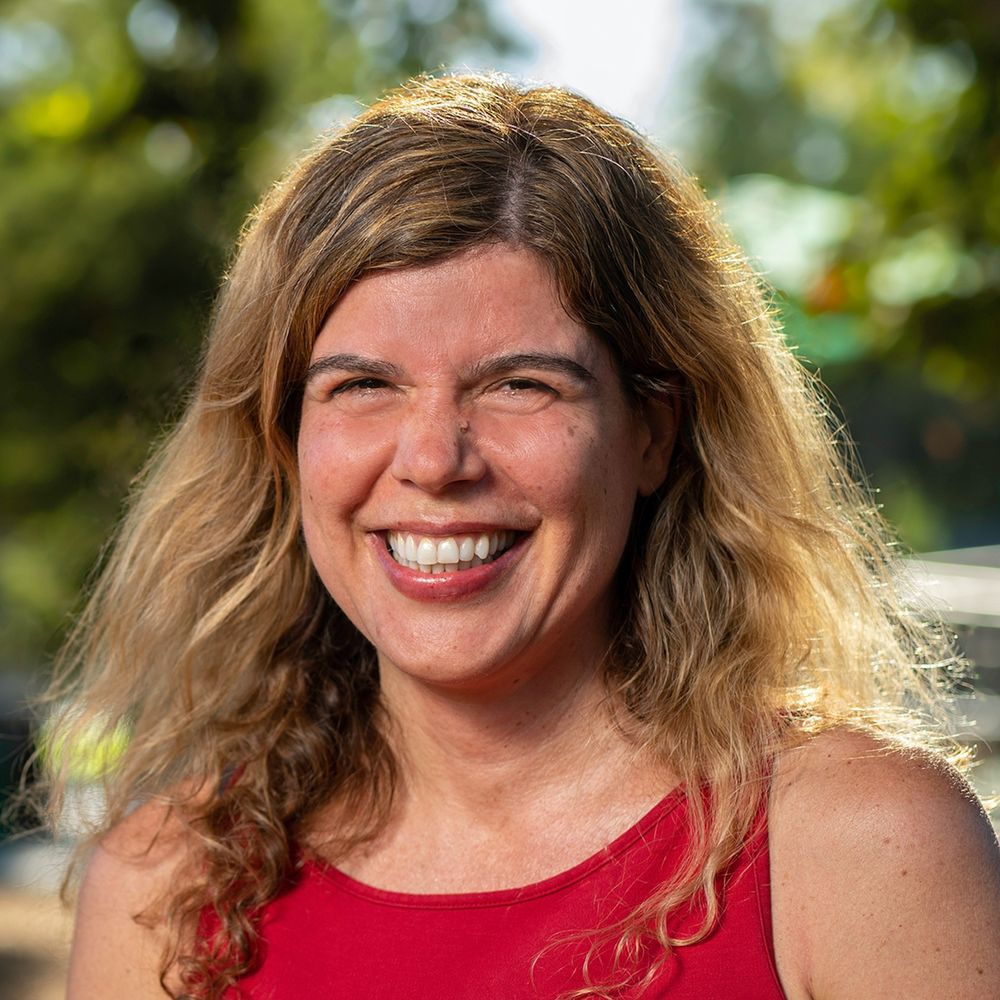
October 8, 2025 at 11:42 PM
Six @stanford.edu scientists, including Anne Brunet @brunetlab.bsky.social, have been awarded High-Risk, High-Reward Research program grants from the National Institutes of Health.
This will support Brunet's work on the peripheral nervous system, organs & aging.
news.stanford.edu/stories/2025...
This will support Brunet's work on the peripheral nervous system, organs & aging.
news.stanford.edu/stories/2025...
Great talks at our recent seminar! Featuring:
Kristy Zera - Blocking the VLA4/VCAM1 axis prevents infarct-induced neurodegeneration by reducing neuroinflammation & promoting vascular integrity
Carla Shatz - Convergence of signals for pruning at a synaptic receptor implicated in Alzheimer's Disease
Kristy Zera - Blocking the VLA4/VCAM1 axis prevents infarct-induced neurodegeneration by reducing neuroinflammation & promoting vascular integrity
Carla Shatz - Convergence of signals for pruning at a synaptic receptor implicated in Alzheimer's Disease


October 8, 2025 at 6:46 PM
Great talks at our recent seminar! Featuring:
Kristy Zera - Blocking the VLA4/VCAM1 axis prevents infarct-induced neurodegeneration by reducing neuroinflammation & promoting vascular integrity
Carla Shatz - Convergence of signals for pruning at a synaptic receptor implicated in Alzheimer's Disease
Kristy Zera - Blocking the VLA4/VCAM1 axis prevents infarct-induced neurodegeneration by reducing neuroinflammation & promoting vascular integrity
Carla Shatz - Convergence of signals for pruning at a synaptic receptor implicated in Alzheimer's Disease
Reposted
Great news! Our podcast, From Our Neurons to Yours, is a finalist for the Listener’s Choice Award in Science & Education at @signalawards.bsky.social!🎙️
Help us win and vote here by Oct. 9: vote.signalaward.com/PublicVoting...
Help us win and vote here by Oct. 9: vote.signalaward.com/PublicVoting...

The Signal Listener's Choice Award needs YOU
I just voted for this finalist to win a Signal Listener's Choice Award. You should too.
vote.signalaward.com
October 1, 2025 at 4:39 PM
Great news! Our podcast, From Our Neurons to Yours, is a finalist for the Listener’s Choice Award in Science & Education at @signalawards.bsky.social!🎙️
Help us win and vote here by Oct. 9: vote.signalaward.com/PublicVoting...
Help us win and vote here by Oct. 9: vote.signalaward.com/PublicVoting...
Join us on Oct 9 at a symposium featuring brain resilience and aging research, including a clinical presentation with a patient’s perspective, poster session, and social! Registration required.
Stanford affiliates, sign up to present a poster by Oct 2.
brainresilience.stanford.edu/events/knigh...
Stanford affiliates, sign up to present a poster by Oct 2.
brainresilience.stanford.edu/events/knigh...

September 25, 2025 at 5:40 PM
Join us on Oct 9 at a symposium featuring brain resilience and aging research, including a clinical presentation with a patient’s perspective, poster session, and social! Registration required.
Stanford affiliates, sign up to present a poster by Oct 2.
brainresilience.stanford.edu/events/knigh...
Stanford affiliates, sign up to present a poster by Oct 2.
brainresilience.stanford.edu/events/knigh...
Amyloid beta and inflammation may converge on the LilrB2 receptor, according to new research led by Carla Shatz and supported by a Knight Initiative Catalyst Award. This may help explain synapse loss in Alzheimer’s.
Learn more: brainresilience.stanford.edu/news/buildin...
Learn more: brainresilience.stanford.edu/news/buildin...

Building bridges between Alzheimer’s theories
A new study finds links between two popular models of the disease—and the results could change how
brainresilience.stanford.edu
September 16, 2025 at 6:58 PM
Amyloid beta and inflammation may converge on the LilrB2 receptor, according to new research led by Carla Shatz and supported by a Knight Initiative Catalyst Award. This may help explain synapse loss in Alzheimer’s.
Learn more: brainresilience.stanford.edu/news/buildin...
Learn more: brainresilience.stanford.edu/news/buildin...
Our Brain Resilience Seminars are back! Yesterday, Jacob Simon shared his research on "A novel toolset for understanding neuromodulation," and Joe Winer discussed "Effects of ⍺-synuclein pathology in normal aging and Alzheimer’s disease." Thank you to all who joined and participated in the Q&A.


September 9, 2025 at 5:39 PM
Our Brain Resilience Seminars are back! Yesterday, Jacob Simon shared his research on "A novel toolset for understanding neuromodulation," and Joe Winer discussed "Effects of ⍺-synuclein pathology in normal aging and Alzheimer’s disease." Thank you to all who joined and participated in the Q&A.
Syed has been a vital part of our Brain Resilience Lab as the Primary Neuroanatomist and @stanfordmedicine.bsky.social’s Primary Brain Dissectionist & Coordinator, supporting research brains and rapid brain autopsies. He’s now beginning his PhD at the University of Washington . Congrats Syed!

September 5, 2025 at 10:48 PM
Syed has been a vital part of our Brain Resilience Lab as the Primary Neuroanatomist and @stanfordmedicine.bsky.social’s Primary Brain Dissectionist & Coordinator, supporting research brains and rapid brain autopsies. He’s now beginning his PhD at the University of Washington . Congrats Syed!
Why do some dementia treatments work in mice but not in people?
At @stanfordneuro.bsky.social, Vanessa Langness, Danielle Simmons, and Frank Longo reviewed 400+ preclinical studies to identify key differences in timing, study design, and disease stage.
brainresilience.stanford.edu/news/why-pro...
At @stanfordneuro.bsky.social, Vanessa Langness, Danielle Simmons, and Frank Longo reviewed 400+ preclinical studies to identify key differences in timing, study design, and disease stage.
brainresilience.stanford.edu/news/why-pro...




August 28, 2025 at 6:17 PM
Why do some dementia treatments work in mice but not in people?
At @stanfordneuro.bsky.social, Vanessa Langness, Danielle Simmons, and Frank Longo reviewed 400+ preclinical studies to identify key differences in timing, study design, and disease stage.
brainresilience.stanford.edu/news/why-pro...
At @stanfordneuro.bsky.social, Vanessa Langness, Danielle Simmons, and Frank Longo reviewed 400+ preclinical studies to identify key differences in timing, study design, and disease stage.
brainresilience.stanford.edu/news/why-pro...
Researching the aging brain starts with knowing its structure.
Syed Bukhari, Primary Neuroanatomist at the Brain Resilience Lab, led a hands-on anatomy workshop for Stanford researchers—sharing expertise and building connections across the brain resilience community.
Syed Bukhari, Primary Neuroanatomist at the Brain Resilience Lab, led a hands-on anatomy workshop for Stanford researchers—sharing expertise and building connections across the brain resilience community.




August 20, 2025 at 7:04 PM
Researching the aging brain starts with knowing its structure.
Syed Bukhari, Primary Neuroanatomist at the Brain Resilience Lab, led a hands-on anatomy workshop for Stanford researchers—sharing expertise and building connections across the brain resilience community.
Syed Bukhari, Primary Neuroanatomist at the Brain Resilience Lab, led a hands-on anatomy workshop for Stanford researchers—sharing expertise and building connections across the brain resilience community.
In the Brain Resilience Lab, Shon has contributed to flagship projects that map the molecular landscape of brain aging and led collaborations using next-generation sequencing, histology & spatial transcriptomics. He’s now starting his neuroscience PhD at @ucsanfrancisco.bsky.social. Congrats Shon!

August 15, 2025 at 10:18 PM
In the Brain Resilience Lab, Shon has contributed to flagship projects that map the molecular landscape of brain aging and led collaborations using next-generation sequencing, histology & spatial transcriptomics. He’s now starting his neuroscience PhD at @ucsanfrancisco.bsky.social. Congrats Shon!
Reposted
Meet Emely Cisneros, a 2025 NeURO-CC Fellow!
A Biology major at Foothill College, Emely is exploring how research can inform care for aging populations in the lab of Tony Wyss-Coray under the mentorship of Marvin Reich.
Passionate about helping others, she aspires to pursue a career in medicine.
A Biology major at Foothill College, Emely is exploring how research can inform care for aging populations in the lab of Tony Wyss-Coray under the mentorship of Marvin Reich.
Passionate about helping others, she aspires to pursue a career in medicine.

August 4, 2025 at 7:26 PM
Meet Emely Cisneros, a 2025 NeURO-CC Fellow!
A Biology major at Foothill College, Emely is exploring how research can inform care for aging populations in the lab of Tony Wyss-Coray under the mentorship of Marvin Reich.
Passionate about helping others, she aspires to pursue a career in medicine.
A Biology major at Foothill College, Emely is exploring how research can inform care for aging populations in the lab of Tony Wyss-Coray under the mentorship of Marvin Reich.
Passionate about helping others, she aspires to pursue a career in medicine.
By integrating innovative lysosomal omics and ferroptosis-targeted interventions, Dr. Monther Abu-Remaileh and Dr. Scott Dixon aim to identify strategies to restore lysosomal function, protect against neurodegeneration, and enhance brain resilience.
brainresilience.stanford.edu/our-science/...
brainresilience.stanford.edu/our-science/...
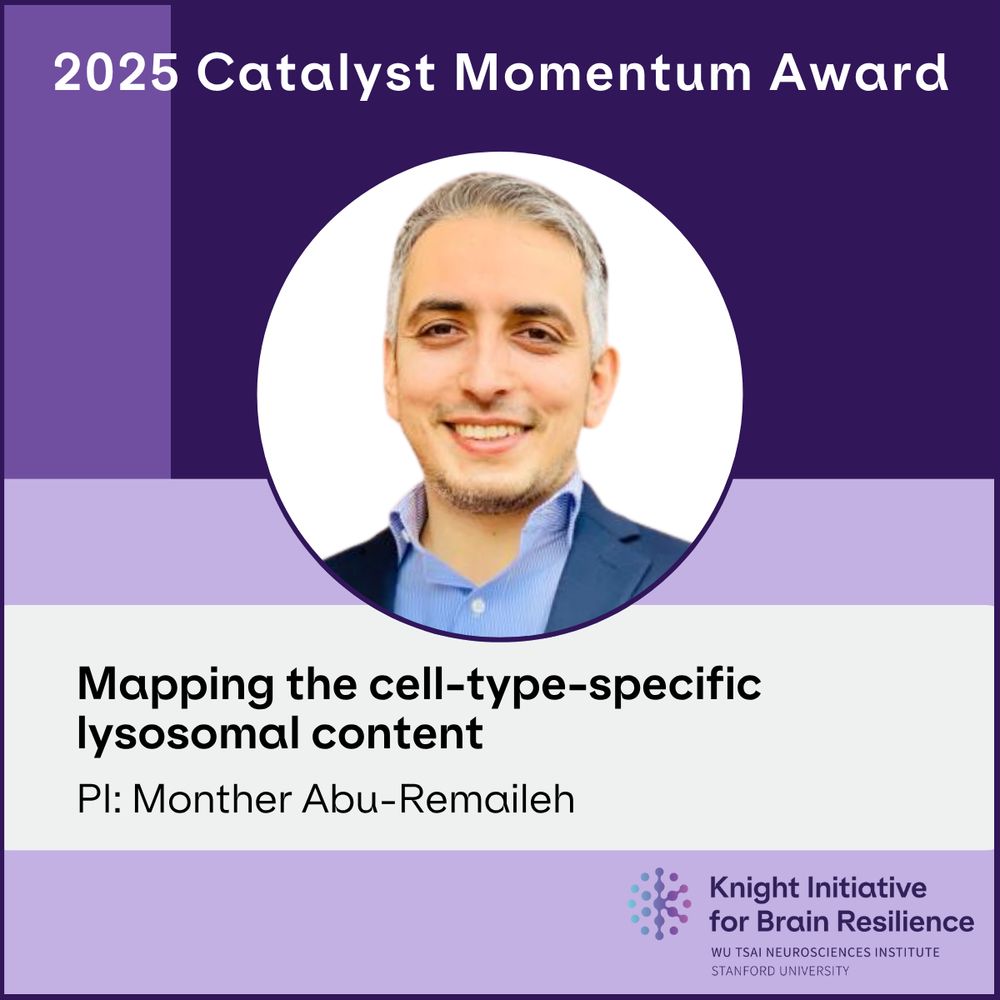

July 31, 2025 at 6:21 PM
By integrating innovative lysosomal omics and ferroptosis-targeted interventions, Dr. Monther Abu-Remaileh and Dr. Scott Dixon aim to identify strategies to restore lysosomal function, protect against neurodegeneration, and enhance brain resilience.
brainresilience.stanford.edu/our-science/...
brainresilience.stanford.edu/our-science/...
Reposted
Celebrate groundbreaking research by nominating a Stanford graduate student or postdoc for the 18th Annual Sammy Kuo Awards in Neuroscience!
Submit materials by this Monday, July 28 at 5pm (PT).
Learn more and nominate: neuroscience.stanford.edu/programs/com...
Submit materials by this Monday, July 28 at 5pm (PT).
Learn more and nominate: neuroscience.stanford.edu/programs/com...
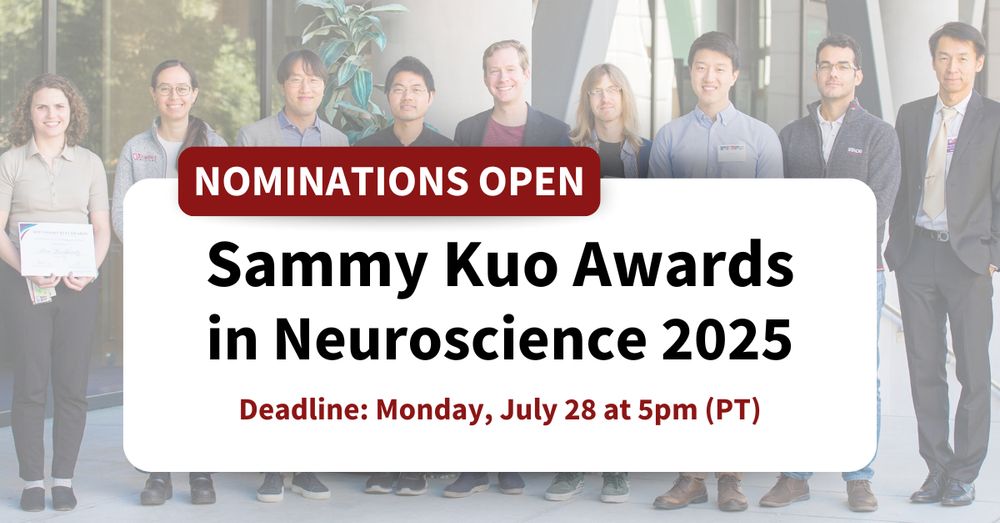
July 25, 2025 at 7:00 PM
Celebrate groundbreaking research by nominating a Stanford graduate student or postdoc for the 18th Annual Sammy Kuo Awards in Neuroscience!
Submit materials by this Monday, July 28 at 5pm (PT).
Learn more and nominate: neuroscience.stanford.edu/programs/com...
Submit materials by this Monday, July 28 at 5pm (PT).
Learn more and nominate: neuroscience.stanford.edu/programs/com...
Reposted
Brain organoids are reshaping neuroscience. To scale up their work, Wu Tsai Neuro affiliates @sergiuppasca.bsky.social, Sarah Heilshorn & team found a solution: xanthan gum. This simple solution could accelerate the discovery of brain development & disease.
neuroscience.stanford.edu/news/common-...
neuroscience.stanford.edu/news/common-...
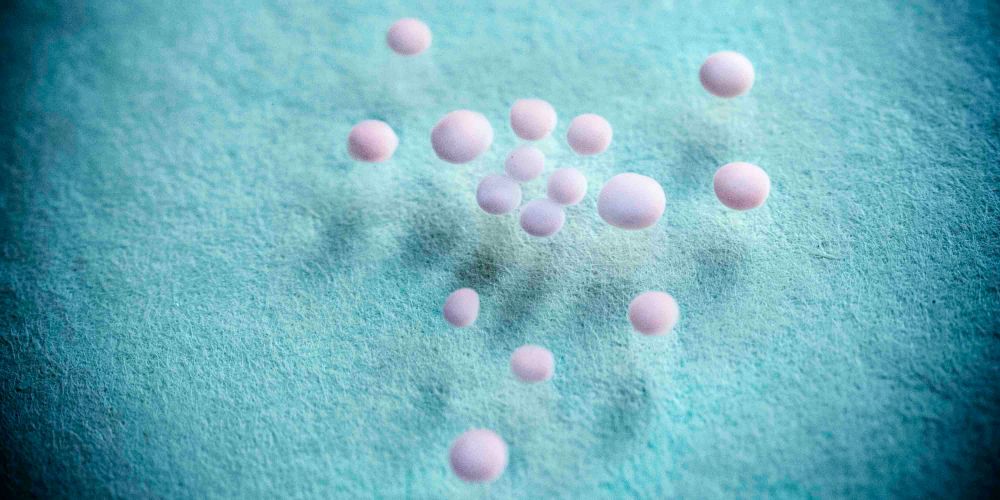
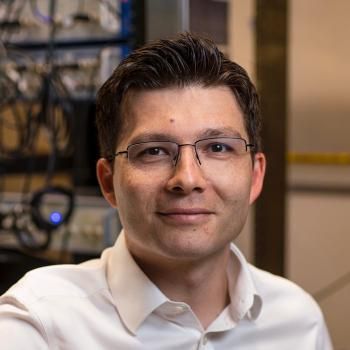
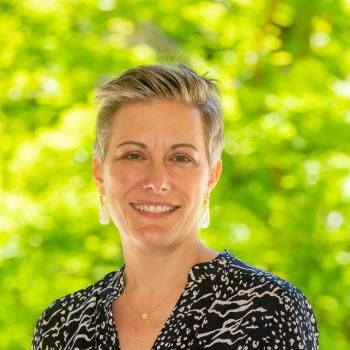
July 16, 2025 at 5:58 PM
Brain organoids are reshaping neuroscience. To scale up their work, Wu Tsai Neuro affiliates @sergiuppasca.bsky.social, Sarah Heilshorn & team found a solution: xanthan gum. This simple solution could accelerate the discovery of brain development & disease.
neuroscience.stanford.edu/news/common-...
neuroscience.stanford.edu/news/common-...
What makes the brain resilient, and how can research help more people stay cognitively healthy as they age?
Highlights include:
🧠 Early biomarkers
🧪 Lysosomal function
💉 Shingles vaccine & reduced dementia risk
📣 Lived experience
📊 72 Stanford posters
brainresilience.stanford.edu/news/knight-...
Highlights include:
🧠 Early biomarkers
🧪 Lysosomal function
💉 Shingles vaccine & reduced dementia risk
📣 Lived experience
📊 72 Stanford posters
brainresilience.stanford.edu/news/knight-...

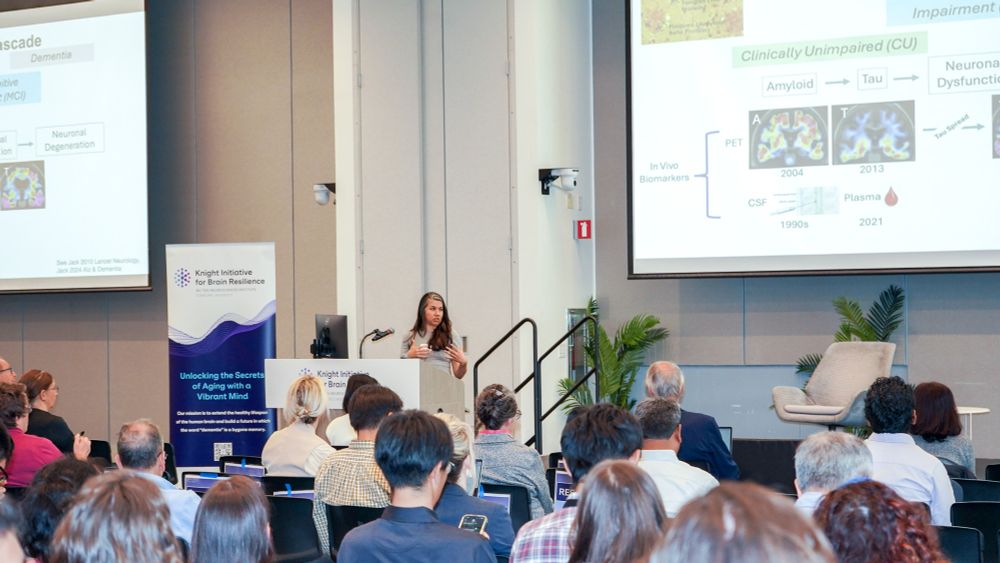

July 15, 2025 at 7:17 PM
What makes the brain resilient, and how can research help more people stay cognitively healthy as they age?
Highlights include:
🧠 Early biomarkers
🧪 Lysosomal function
💉 Shingles vaccine & reduced dementia risk
📣 Lived experience
📊 72 Stanford posters
brainresilience.stanford.edu/news/knight-...
Highlights include:
🧠 Early biomarkers
🧪 Lysosomal function
💉 Shingles vaccine & reduced dementia risk
📣 Lived experience
📊 72 Stanford posters
brainresilience.stanford.edu/news/knight-...
“We’ve developed a blood-based indicator of the age of your organs,” said Tony Wyss-Coray. “With this indicator, we can assess the age of an organ today & predict the odds of your getting a disease associated with that organ 10 years later.”
Read more: med.stanford.edu/news/all-new...
Read more: med.stanford.edu/news/all-new...
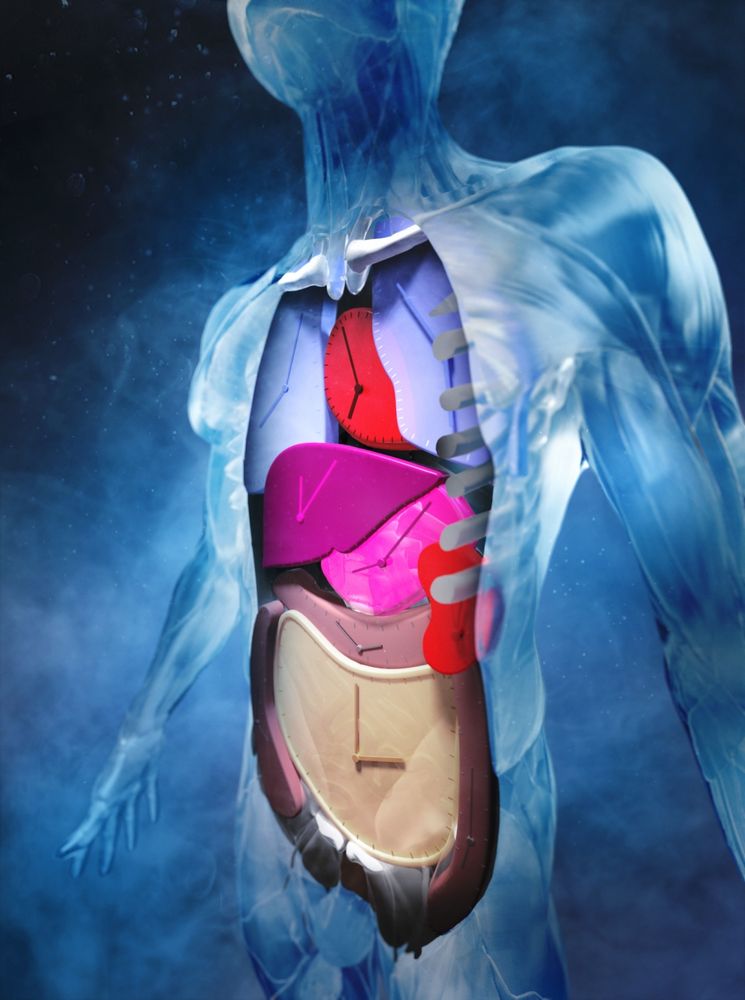
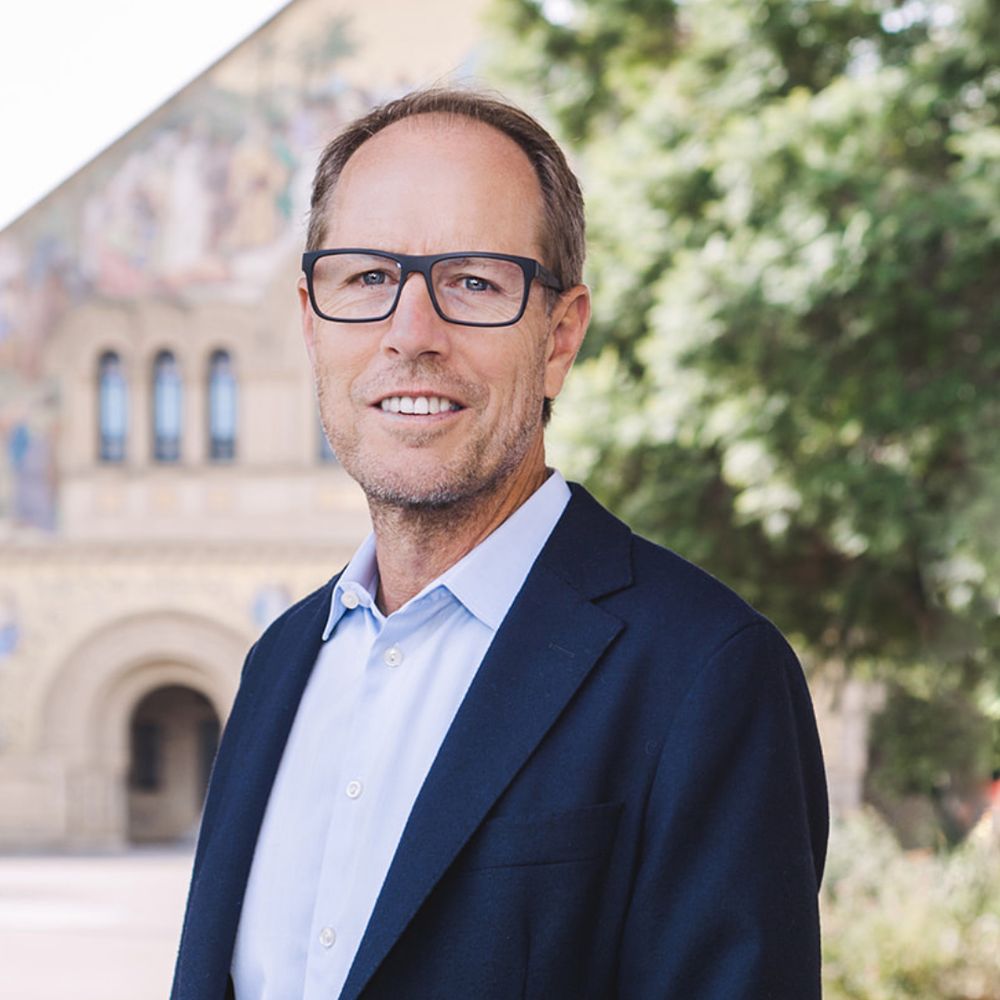
July 9, 2025 at 7:06 PM
“We’ve developed a blood-based indicator of the age of your organs,” said Tony Wyss-Coray. “With this indicator, we can assess the age of an organ today & predict the odds of your getting a disease associated with that organ 10 years later.”
Read more: med.stanford.edu/news/all-new...
Read more: med.stanford.edu/news/all-new...
Reposted
How has stroke research evolved, and where is it headed? In today's episode, physician-scientist @marionbuckwalter.bsky.social shares how decades of scientific discovery shaped what we know about stroke and why continued research is key to future progress.
neuroscience.stanford.edu/news/how-bas...
neuroscience.stanford.edu/news/how-bas...
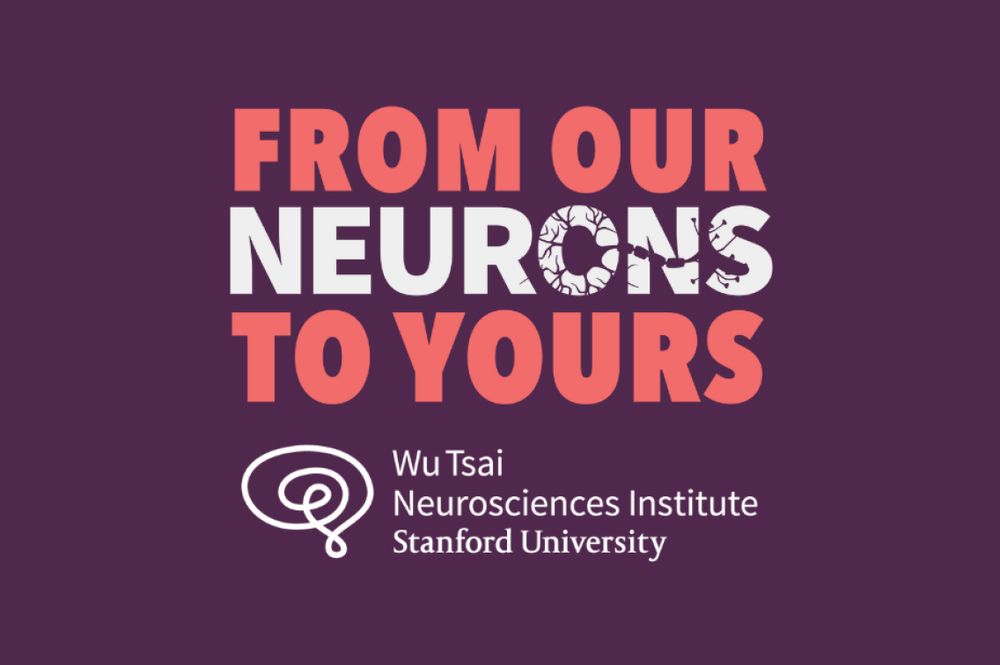
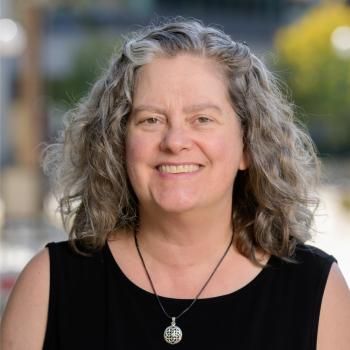
June 26, 2025 at 7:47 PM
How has stroke research evolved, and where is it headed? In today's episode, physician-scientist @marionbuckwalter.bsky.social shares how decades of scientific discovery shaped what we know about stroke and why continued research is key to future progress.
neuroscience.stanford.edu/news/how-bas...
neuroscience.stanford.edu/news/how-bas...
Reposted
Excited to share our review on Hallmark of Stem Cell Aging! With Tom Rando and Peggy Goodell @goodell-lab.bsky.social!!
www.sciencedirect.com/science/arti...
www.sciencedirect.com/science/arti...
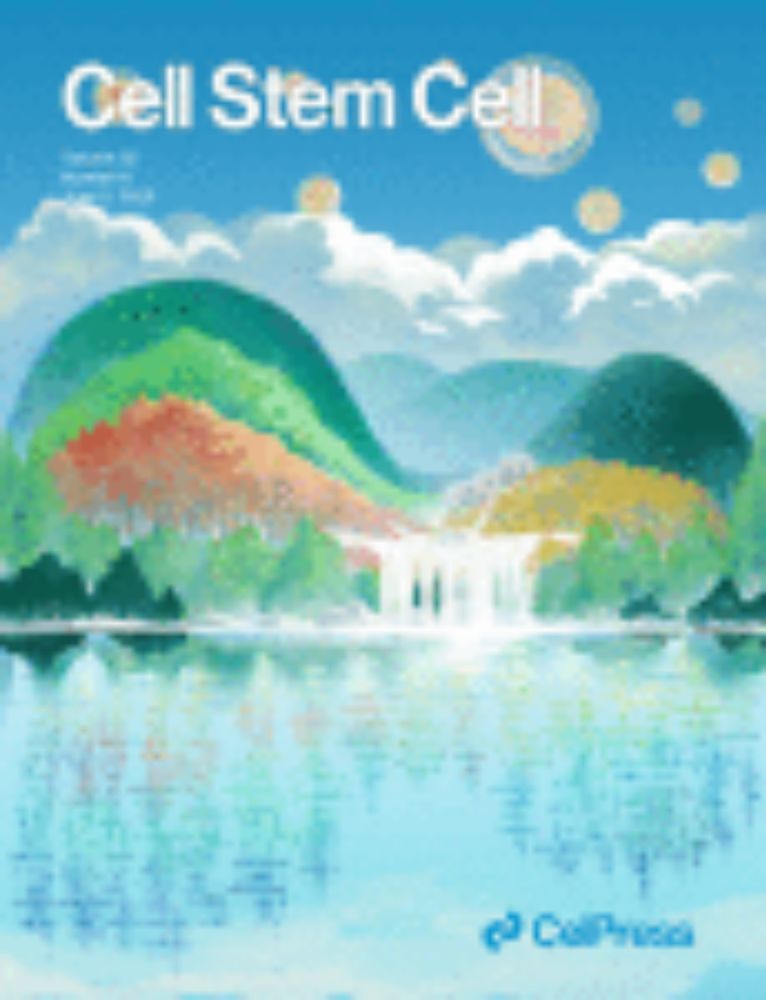
Hallmarks of stem cell aging
As organisms age, somatic stem cells progressively lose their ability to sustain tissue homeostasis and support regeneration. Although stem cells are …
www.sciencedirect.com
June 25, 2025 at 3:31 AM
Excited to share our review on Hallmark of Stem Cell Aging! With Tom Rando and Peggy Goodell @goodell-lab.bsky.social!!
www.sciencedirect.com/science/arti...
www.sciencedirect.com/science/arti...
Why do some older adults remember better than others, even when equally healthy? A new Knight-supported study led by Jintao Sheng & Anthony Wagner shows 2 distinct pathways that shape memory in aging:
🧠Early Alzheimer’s tau
🧠Moment-to-moment attention
🔗 brainresilience.stanford.edu/news/two-roa...
🧠Early Alzheimer’s tau
🧠Moment-to-moment attention
🔗 brainresilience.stanford.edu/news/two-roa...
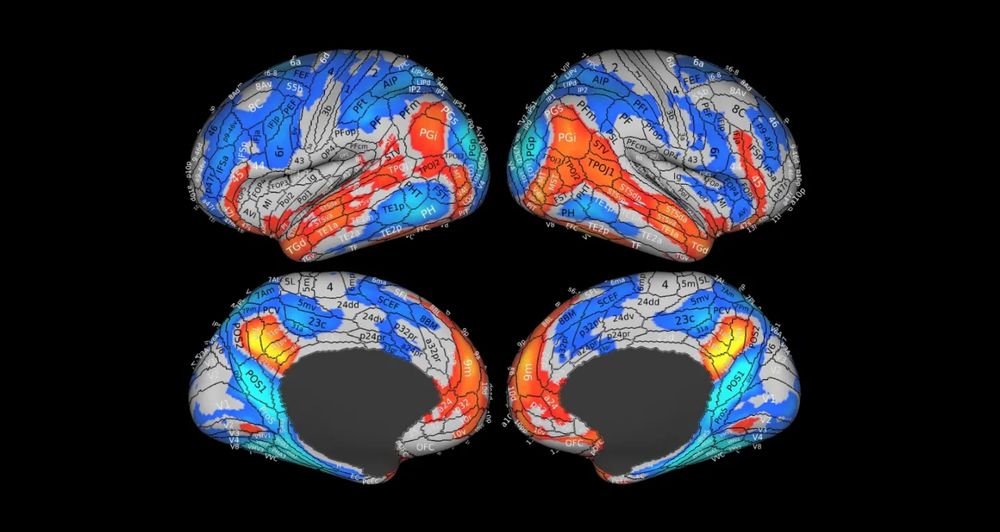


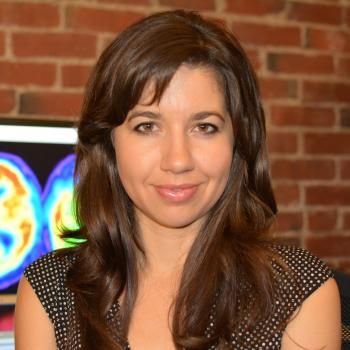
June 25, 2025 at 7:26 PM
Why do some older adults remember better than others, even when equally healthy? A new Knight-supported study led by Jintao Sheng & Anthony Wagner shows 2 distinct pathways that shape memory in aging:
🧠Early Alzheimer’s tau
🧠Moment-to-moment attention
🔗 brainresilience.stanford.edu/news/two-roa...
🧠Early Alzheimer’s tau
🧠Moment-to-moment attention
🔗 brainresilience.stanford.edu/news/two-roa...

